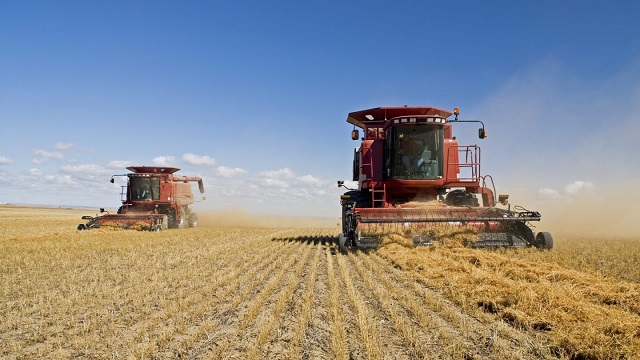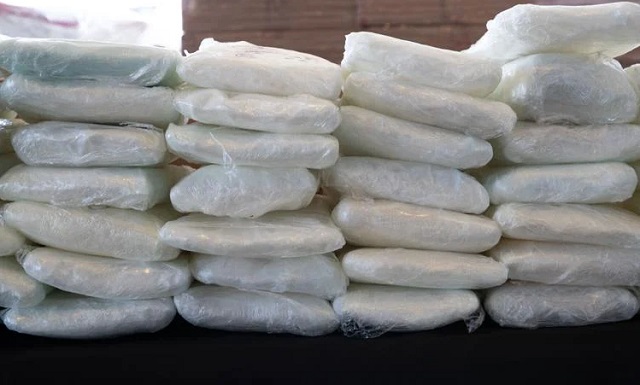Alberta
Update: Bradley Duff Arrested in Grande Prairie

July 2, 2020
Whitecourt RCMP – police presence in Blue Ridge are in Woodlands County – Update #7 Duff Arrested
Grande Prairie, Alta. – Bradley Duff is in police custody in Grande Prairie after being wanted for 23 days and eluding police across multiple RCMP jurisdictions.
On July 1, 2020, at 8:30 a.m., Grande Prairie RCMP received a complaint of a break and enter to a rural business located east of Grande Prairie.
While Grande Prairie RCMP were responding to that location, further complaints were received of a male causing damage to the business and allegedly assaulting the complainant, then the suspect fled on foot.
Grande Prairie RCMP responded and attempted to contain the suspect to an area; however, the suspect stole a jeep and left towards the city of Grande Prairie. For reasons of public safety, no pursuit was initiated.
Grande Prairie RCMP received complaints from the public of a jeep being driven erratically within the city of Grande Prairie. The jeep was reported to have allegedly driven into a business, rammed a parked vehicle twice and was involved in a hit and run collision with a single vehicle before being observed heading westbound leaving Grande Prairie towards Beaverlodge, Alta.
While in the Beaverlodge area, Beaverlodge RCMP located the stolen jeep and after the vehicle entered the town of Beaverlodge, attempts were made to contain the jeep. The stolen jeep allegedly was used to cause further damage within Beaverlodge before fleeing on Highway 43 eastbound. Beaverlodge RCMP followed the stolen jeep and a tire deflation device was successfully deployed, stopping the stolen jeep. The suspect fled on foot a short distance before being arrested.
The suspect in this incident was identified as Bradley Duff, wanted on a several warrants of arrest as described in the background below.
As a result of the above noted incidents, Bradley Duff is facing the following charges:
- Flight from police (x2)
- Resist a peace officer
- Assault
- Operate a conveyance in a manner that was dangerous to the public
- Operate a conveyance while prohibited from doing so
- Possession of stolen property under $5,000 (x2)
- Possession of stolen property over $5,000
Following a judicial hearing, Duff did not speak to bail and was remanded into custody to attend court on August 5, 2020, in Grande Prairie Provincial Court.
The RCMP would like to thank the public and the media for your assistance as tips and calls with information regarding suspicious persons have been invaluable in assisting police in locating and apprehending Duff.
Background:
June 25, 2020
Whitecourt RCMP – police presence in Blue Ridge are in Woodlands County – Update #6 High Prairie arrests
High Prairie, Alta. – On June 25, 2020, following a lengthy search, High Prairie RCMP, along with the assistance of the RCMP Police Dog Service, arrested two males without incident. High Prairie RCMP continue to investigate this incident and the two male suspects remain in custody.
Bradley Duff remains at large and his warrants for arrest remain in effect.
The public are warned not to approach Duff as he is believed to be possibly armed and dangerous. If anyone has information about Bradley Duff’s whereabouts, please contact Whitecourt RCMP at 780-779-5900, 911 or your local police.
If you wish to remain anonymous, you can contact Crime Stoppers at 1-800-222-8477 (TIPS), online at www.P3Tips.com or by using the “P3 Tips” app available through the Apple App or Google Play Store.”
June 25, 2020
Whitecourt RCMP – police presence in Blue Ridge are in Woodlands County – Update #5 High Prairie Public Safety Warning
High Prairie, Alta. – Earlier this morning, High Prairie RCMP received a report of an abandoned stolen vehicle and a sighting of an individual matching Bradley Duff’s description in the Gillwood area south of High Prairie. This area is further described as being near Township Road 740 and Range Road 170 south of High Prairie.
Area residents are cautioned to be on the lookout for Bradley Duff who has been sighted on area rural properties.
Duff continues to remain on outstanding warrants of arrest for the charges noted in the background below.
Bradley Duff (35) is described as:
- 6’2”
- 201 lbs
- Blue eyes
- Brown hair
- Multiple tattoos
High Prairie RCMP, along with the assistance of RCMP support services will have a heavy police presence in the area. RCMP are asking that the public please avoid the area and refrain from posting photos and/or video on social media.
The public are warned not to approach Duff as he is believed to be possibly armed and dangerous. If anyone has information about Bradley Duff’s whereabouts, please contact Whitecourt RCMP at 780-779-5900, 911 or your local police.
If you wish to remain anonymous, you can contact Crime Stoppers at 1-800-222-8477 (TIPS), online at www.P3Tips.com or by using the “P3 Tips” app available through the Apple App or Google Play Store.”
June 23, 2020
Whitecourt RCMP – police presence in Blue Ridge are in Woodlands County – Update #4 Warrants
Whitecourt, Alta. – On June 23, 2020, at 8:30 a.m., Mayerthorpe RCMP received a complaint of a suspicious person in a rural area northeast of Mayerthorpe, Alta., in a pick-up truck with a dirt bike in the box. Mayerthorpe RCMP attended the location and located the stolen pick-up abandoned off road in the Connor Creek area. The stolen pick-up truck was linked to the June 18, 2020, incident in Barrhead, Alta., outlined in the background below.
A short time later information was received by Mayerthorpe RCMP of an individual matching Bradley Duff’s description, having been in the area seeking fuel for the dirt bike.
An extensive search of the area was conducted by Mayerthorpe, Evansburg, Whitecourt and Barrhead RCMP along with the assistance of RCMP Air Services, Police Dog Services and the Emergency Response Team; however, the search was unsuccessful in locating the suspect.
Whitecourt and Barrhead RCMP, along with the assistance of the RCMP Western Alberta Crime Reduction Unit, continue to investigate these incidents.
As a result of further investigation, RCMP have obtained warrants for Bradley Gordon Duff’s arrest in relation to the following charges:
- Break and enter to a residence
- Dangerous operation of a conveyance (x2)
- Flight from police
Bradley Duff is also facing an additional charge of assault relating to an incident that occurred on May 13, 2020, for which Whitecourt RCMP have obtained a warrant for his arrest.
A 28-year-old female from Whitecourt, Alta., is also charged with break and enter to a residence. She was released on an undertaking for Barrhead Provincial Court on September 22, 2020. Her name cannot be released as the information has not yet been sworn.
The public are warned not to approach Duff as he is believed to be possibly armed and dangerous. If anyone has information about Bradley Duff’s whereabouts, please contact Whitecourt RCMP at 780-779-5900, 911 or your local police.
If you wish to remain anonymous, you can contact Crime Stoppers at 1-800-222-8477 (TIPS), online at www.P3Tips.com or by using the “P3 Tips” app available through the Apple App or Google Play Store.”
June 19, 2020
Whitecourt RCMP – police presence in Blue Ridge are in Woodlands County – Update #3 Barrhead Incident
Barrhead, Alta. – On June 18, 2020, at approximately 9 p.m., Barrhead RCMP received a complaint of a break and enter to a residence located in the area of Secondary Highway 658 near Fort Assiniboine, Alta. The suspect vehicle attempted to ram the complainant’s vehicle in an attempt to flee the property.
Barrhead RCMP attempted to locate the suspect vehicle and the suspect vehicle came to rest in a ditch in the area of the Athabasca river southwest of Fort Assiniboine, before both suspects fled into the forest. RCMP Air Services and the RCMP Police Service Dog was utilized and one of the suspects was taken into custody without incident. The second suspect remained at large.
Further investigation has resulted in the second suspect being identified as Bradley Gordon Duff 35, of no fixed address.
A 28-year-old female from Whitecourt, Alta. remains in custody awaiting a bail hearing.
Barrhead RCMP’s investigation into this matter continues.
The public are warned not to approach Duff as he is believed to be possibly armed and dangerous. Barrhead RCMP are seeking the public’s assistance in locating Duff’s whereabouts as he is a suspect in this break and enter investigation and has outstanding arrest warrants on unrelated matters.
If anyone has information about Bradley Duff’s whereabouts, please contact Barrhead RCMP at 780-674-4848, 911 or your local police. If you wish to remain anonymous, you can contact Crime Stoppers at 1-800-222-8477 (TIPS), online at www.P3Tips.com or by using the “P3 Tips” app available through the Apple App or Google Play Store.”
June 15, 2020
Whitecourt RCMP – police presence in Blue Ridge are in Woodlands County – Update #2
High Prairie, Alta. – On June 14, 2020, High Prairie RCMP received a report of a sighting of a male believed to be Bradley Duff during the night / early morning hours in the vicinity of Range Road 185 and Township Road 742 in Big Lakes County, Alta. This location is 3 km’s southwest of Triangle Hall, located 20 kms west of High Prairie on Highway 2, or 25kms south of Mclennan, Alta., on Highway 2.
Duff is believed to have been wearing all dark or black clothing and a red bandana covering his face and was in the process of removing items from a white Dodge truck parked off the roadway. The same white Dodge truck was later reported to Emergency Services by a passerby to be on fire on June 15, 2020, at 12:30 a.m.
Further investigation determined the Dodge truck had been stolen out of Whitecourt, Alta., and Bradley Duff was the last person known to have been seen driving it.
High Prairie RCMP Detachment has deployed multiple police resources to the area, including RCMP Police Dog Services Unit to conduct a search for Duff.
RCMP are asking that the public please avoid the area and refrain from posting photos and/or video on social media.
An update will be provided when available.
The public are warned not to approach Duff as he is believed to be possibly armed and dangerous. Duff continues to have warrants for his arrest. If anyone has information about Bradley Duff’s whereabouts, please contact Whitecourt RCMP at 780-779-5900 or your local police. If you wish to remain anonymous, you can contact Crime Stoppers at 1-800-222-8477 (TIPS), online at www.P3Tips.com or by using the “P3 Tips” app available through the Apple App or Google Play Store.”
June 9, 2020
Whitecourt RCMP – police presence in Blue Ridge are in Woodlands County – Update
Whitecourt, Alta. – Whitecourt RCMP members are no longer in the area of Blue Ridge; however, their investigation continues.
On June 9, 2020, at 5:49 a.m., Whitecourt RCMP received a complaint of a vehicle in the ditch with a passenger unconscious with Emergency Services on scene. When the male became conscious, he fled into a forested area.
Whitecourt RCMP’s investigation revealed that the vehicle was stolen out of Edmonton in April 2020. Items in the vehicle and a description of the suspect who fled the scene led RCMP to believe that the suspect is Bradley Duff (35) of no fixed address. Duff is currently on outstanding warrants on other matters.
Whitecourt RCMP, with the assistance of RCMP Police Dog Services and RCMP Air Services conducted a lengthy search of the area and inquiries with residents of the area; however, were unable to locate the suspect.
Whitecourt RCMP are seeking the public’s assistance in locating Duff’s whereabouts as he is a suspect in the stolen vehicle investigation and has outstanding arrest warrants on unrelated matters. RCMP caution the public not to approach Duff as he is considered dangerous. Duff has been known to have access to firearms in the past; however, it is unknown if he is armed at this time.
If anyone has information about Bradley Duff’s whereabouts, please contact Whitecourt RCMP at 780-779-5900 or your local police. If you wish to remain anonymous, you can contact Crime Stoppers at 1-800-222-8477 (TIPS), online at www.P3Tips.com or by using the “P3 Tips” app available through the Apple App or Google Play Store.”
June 9, 2020
Whitecourt RCMP – police presence in Blue Ridge are in Woodlands County
Whitecourt, Alta. – Whitecourt RCMP would like to advise the public that there is a heavy police presence in the area of Blue Ridge in Woodlands County between Township Road 594 and 592 near Range Road 102 outside Whitecourt.
RCMP are asking that the public please avoid the area and refrain from posting photos and/or video on social media.
Alberta
Fortis et Liber: Alberta’s Future in the Canadian Federation
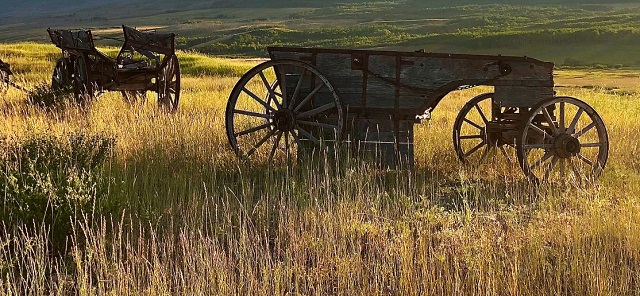
From the C2C Journal
By Barry Cooper, professor of political science, University of Calgary
Canada’s western lands, wrote one prominent academic, became provinces “in the Roman sense” – acquired possessions that, once vanquished, were there to be exploited. Laurentian Canada regarded the hinterlands as existing primarily to serve the interests of the heartland. And the current holders of office in Ottawa often behave as if the Constitution’s federal-provincial distribution of powers is at best advisory, if it needs to be acknowledged at all. Reviewing this history, Barry Cooper places Alberta’s widely criticized Sovereignty Act in the context of the Prairie provinces’ long struggle for due constitutional recognition and the political equality of their citizens. Canada is a federation, notes Cooper. Provinces do have rights. Constitutions do mean something. And when they are no longer working, they can be changed.
Alberta
30 million contraband cigarettes valued at $25 million dollars seized in Alberta
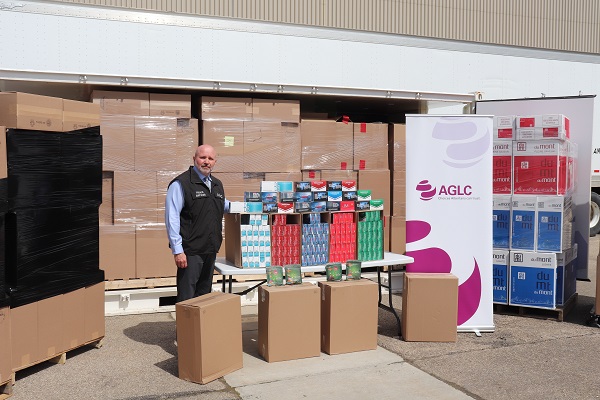
New release from Alberta Gaming Liquor and Cannabis (AGLC)
Record setting contraband tobacco seizures result from AGLC investigations
Alberta Gaming Liquor and Cannabis (AGLC) recently concluded several investigations which netted two of the largest contraband tobacco seizures in Alberta history. The combined total of the contraband tobacco seized was 154,800 cartons of contraband cigarettes (30.7 million individual cigarettes). These seizures are a result of the work conducted by AGLC’s Tobacco Enforcement Unit with the assistance of provincial law enforcement agencies.
- In a January 2024 investigation, approximately 43,500 cartons (8.7 million individual cigarettes) were seized. This equates to $7 million in retail value with a provincial tax avoidance of $2.4 million. This included the seizure of 15,000 grams of contraband shisha.
- In April of 2024, 60 wrapped pallets were seized from a warehouse setting netting a total of 111,300 cartons of contraband cigarettes (22 million individual cigarettes) which equates to over $18 million in retail value with a provincial tax avoidance of $6.6 million.
- Criminal Charges are pending in both cases.
“These are significant contraband tobacco investigations involving individuals that are part of organized networks whose proceeds defraud Albertans millions of dollars in tax revenue. AGLC will continue to work with our partners to investigate and disrupt the individuals and organizations involved in these illegal activities as part our commitment to a strong contraband tobacco enforcement program in Alberta.”
- Gary Peck, Vice President, Regulatory Services, AGLC
“Contraband tobacco hurts law abiding businesses that follow the rules, and it costs Albertans millions each year from lost tax revenue. Our government is committed to keeping illegal tobacco off the streets and ensuring that the sale of tobacco products comply with the law.”
- Dale Nally, Minister of Service Alberta and Red Tape Reduction
Over the last nine months, AGLC’s Tobacco Enforcement unit has seized an estimated 35 million contraband cigarettes and 115,000 grams of contraband shisha from across the province. The total potential lost tax revenue is estimated to be more than $10.1 million.
Contraband tobacco:
- is any tobacco product that does not comply with federal and provincial laws related to importation, marking, manufacturing, stamping and payment of duties and taxes;
- comes from four main sources: illegal manufacturers, counterfeits, tax-exempt diversions and resale of stolen legal tobacco; and
- can be recognized by the absence of a red (Alberta) or peach/light tan (Canada) stamp bearing the “DUTY PAID CANADA DROIT ACQUITTÉ” on packages of cigarettes and cigars or pouches of tobacco.
In addition to lost revenues that may otherwise benefit Albertans, illegally manufactured products also pose public health and safety risks as they lack regulatory controls and inspections oversight.
Albertans who suspect illegal tobacco production, packaging and/or trafficking are encouraged to contact AGLC’s Tobacco Enforcement Unit at 1-800-577-2522 or Crime Stoppers at 1-800-222-TIPS (8477).
Under a Memorandum of Understanding with Alberta Treasury Board and Finance, AGLC enforces the Tobacco Tax Act and conducts criminal investigations related to the possession, distribution and trafficking of contraband tobacco products. In 2022-23, provincial revenue from tobacco taxes was approximately $522 million.
-

 COVID-191 day ago
COVID-191 day agoCOVID Lab Leak: Over four later, EcoHealth Alliance funding is finally suspended
-

 Alberta2 days ago
Alberta2 days ago30 million contraband cigarettes valued at $25 million dollars seized in Alberta
-
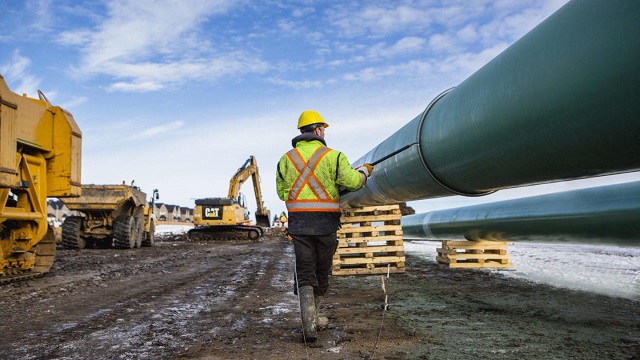
 Canadian Energy Centre2 days ago
Canadian Energy Centre2 days agoTrans Mountain completion shows victory of good faith Indigenous consultation
-
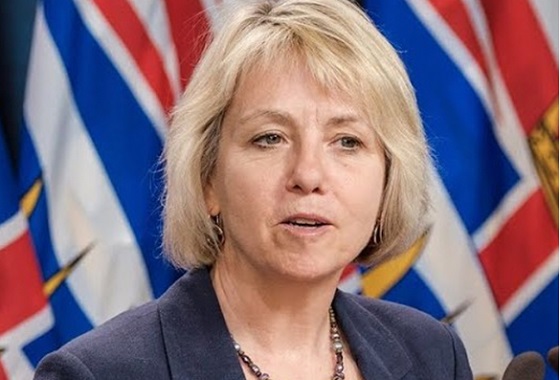
 COVID-192 days ago
COVID-192 days agoHealthcare workers obtain partial win against Bonnie Henry in BC Supreme Court
-

 COVID-192 days ago
COVID-192 days agoElon Musk-backed doctor critical of COVID response vows appeal after court sides with medical board
-

 Health2 days ago
Health2 days agoSouth Korean president declares low birth rate a ‘national emergency,’ plans new ministry to address it
-

 Health2 days ago
Health2 days agoUK pediatrician who led review of child ‘transitions’ says US medical groups ‘misleading the public’
-

 Alberta2 days ago
Alberta2 days agoFortis et Liber: Alberta’s Future in the Canadian Federation
 For 200 years Rupert’s Land (its flag shown on top left) along with the Northwest and Northeast Territories were the exclusive commercial domain of the Hudson’s Bay Company (HBC), granted by the British Crown; Great Britian officially transferred these vast lands to the Crown in Right of Canada in 1870. (Source of map:
For 200 years Rupert’s Land (its flag shown on top left) along with the Northwest and Northeast Territories were the exclusive commercial domain of the Hudson’s Bay Company (HBC), granted by the British Crown; Great Britian officially transferred these vast lands to the Crown in Right of Canada in 1870. (Source of map:  Obscure but legally important: Canada is often said to have “purchased” Rupert’s Land from the Hudson’s Bay Company, but Canada did not actually pay for the land, only for the company’s capital improvements such as Lower Fort Garry in the Rural Municipality of St. Andrews (aka the Stone Fort, top), Fort Edmonton (middle), depicted here after construction of Alberta’s Legislative Assembly building, and the Hudson’s Bay Brigade Trail (bottom). (Sources of images: (top)
Obscure but legally important: Canada is often said to have “purchased” Rupert’s Land from the Hudson’s Bay Company, but Canada did not actually pay for the land, only for the company’s capital improvements such as Lower Fort Garry in the Rural Municipality of St. Andrews (aka the Stone Fort, top), Fort Edmonton (middle), depicted here after construction of Alberta’s Legislative Assembly building, and the Hudson’s Bay Brigade Trail (bottom). (Sources of images: (top)  “Enter the Union on an equal basis with existing states”: In contrast to Canada, the U.S. Northwest Ordinance of 1787 provided a formal and transparent mechanism by which newly settled territories could graduate to statehood if they met certain conditions – gaining the same rights and privileges as the original 13 states.
“Enter the Union on an equal basis with existing states”: In contrast to Canada, the U.S. Northwest Ordinance of 1787 provided a formal and transparent mechanism by which newly settled territories could graduate to statehood if they met certain conditions – gaining the same rights and privileges as the original 13 states. “Our lives our fortunes and our sacred honour”: Métis leaders Louis Riel (top left) and John Bruce (top right) saw the 1870 transfer of Rubert’s Land to Canada as an act of “abandonment” by the British Crown; to protect the interests of the Red River Settlement (bottom), they “refus[ed] to recognise the authority of Canada.” (Sources: (top left photo) Library and Archives Canada, C-018082; (top right photo)
“Our lives our fortunes and our sacred honour”: Métis leaders Louis Riel (top left) and John Bruce (top right) saw the 1870 transfer of Rubert’s Land to Canada as an act of “abandonment” by the British Crown; to protect the interests of the Red River Settlement (bottom), they “refus[ed] to recognise the authority of Canada.” (Sources: (top left photo) Library and Archives Canada, C-018082; (top right photo)  “Provinces in the Roman sense”: According to political scientist James Mallory, Canada’s Prairie provinces were akin to “provinciae” in ancient Rome – conquered lands whose inhabitants were not citizens and who existed to serve the interests of the Imperial Capital and the Italian heartland. Shown, the fall of Macedonia in 168 BC depicted in The Triumph of Aemilius Paulus by Carle Vernet, 1789. (Source of painting:
“Provinces in the Roman sense”: According to political scientist James Mallory, Canada’s Prairie provinces were akin to “provinciae” in ancient Rome – conquered lands whose inhabitants were not citizens and who existed to serve the interests of the Imperial Capital and the Italian heartland. Shown, the fall of Macedonia in 168 BC depicted in The Triumph of Aemilius Paulus by Carle Vernet, 1789. (Source of painting:  In 1905 the Dominion of Canada carved the new provinces of Alberta and Saskatchewan out of portions of the Northwest Territories; the newcomers were treated as distinctly second-class in comparison to the original provinces, among other things only gaining full control over their lands and natural resources in 1930. (Sources of photos (clockwise, starting top-left):
In 1905 the Dominion of Canada carved the new provinces of Alberta and Saskatchewan out of portions of the Northwest Territories; the newcomers were treated as distinctly second-class in comparison to the original provinces, among other things only gaining full control over their lands and natural resources in 1930. (Sources of photos (clockwise, starting top-left):  The Prairie provinces continued to be subjected to destructive Laurentian policies throughout the 20th century, such as prolongation of the Canadian Wheat Board, official bilingualism and the National Energy Program, implemented by Pierre Trudeau in 1981 (shown on bottom left, to the right of Alberta premier Peter Lougheed in the centre). Depicted on bottom right, oil sands facility at Mildred Lake. (Sources of photos: (top left) Canadian Government Motion Picture Bureau/Library and Archives Canada/C-064834; (bottom left) The Canadian Press/Dave Buston; (bottom right)
The Prairie provinces continued to be subjected to destructive Laurentian policies throughout the 20th century, such as prolongation of the Canadian Wheat Board, official bilingualism and the National Energy Program, implemented by Pierre Trudeau in 1981 (shown on bottom left, to the right of Alberta premier Peter Lougheed in the centre). Depicted on bottom right, oil sands facility at Mildred Lake. (Sources of photos: (top left) Canadian Government Motion Picture Bureau/Library and Archives Canada/C-064834; (bottom left) The Canadian Press/Dave Buston; (bottom right)  “It’s not like Ottawa is a national government”: The Alberta Sovereignty within a United Canada Act, passed in late 2022 by the UCP government of Premier Danielle Smith, pictured, aims to strengthen the province’s ability to limit unconstitutional intrusions of federal policy and law into areas of provincial jurisdiction, thereby reaffirming that Canada is a federal state. (Source of photo: The Canadian Press/Jason Franson)
“It’s not like Ottawa is a national government”: The Alberta Sovereignty within a United Canada Act, passed in late 2022 by the UCP government of Premier Danielle Smith, pictured, aims to strengthen the province’s ability to limit unconstitutional intrusions of federal policy and law into areas of provincial jurisdiction, thereby reaffirming that Canada is a federal state. (Source of photo: The Canadian Press/Jason Franson) Although attacked by critics, Alberta’s Sovereignty Act has received strong popular support for challenging the Justin Trudeau government’s constant intrusions into areas of provincial constitutional jurisdiction; the author points out that the Constitution does not require provinces to enforce federal laws, and that the Supreme Court of Canada has confirmed this. Shown, supporters of the Sovereignty Act outside the Alberta legislature, December 2022. (Source of photo:
Although attacked by critics, Alberta’s Sovereignty Act has received strong popular support for challenging the Justin Trudeau government’s constant intrusions into areas of provincial constitutional jurisdiction; the author points out that the Constitution does not require provinces to enforce federal laws, and that the Supreme Court of Canada has confirmed this. Shown, supporters of the Sovereignty Act outside the Alberta legislature, December 2022. (Source of photo:  “Clear majority on a clear question”: Two years after the 1998 Quebec Secession Reference case before the Supreme Court of Canada, the Liberal government of Jean Chrétien (on bottom, leaning forward) introduced the Clarity Act, establishing the conditions under which Canadian provinces may be allowed to begin the process of secession. The author considers this another act violating the concept of federalism, with Ottawa unilaterally calling the shots and placing provinces in a subordinate position. (Sources of photos: (top)
“Clear majority on a clear question”: Two years after the 1998 Quebec Secession Reference case before the Supreme Court of Canada, the Liberal government of Jean Chrétien (on bottom, leaning forward) introduced the Clarity Act, establishing the conditions under which Canadian provinces may be allowed to begin the process of secession. The author considers this another act violating the concept of federalism, with Ottawa unilaterally calling the shots and placing provinces in a subordinate position. (Sources of photos: (top) 

